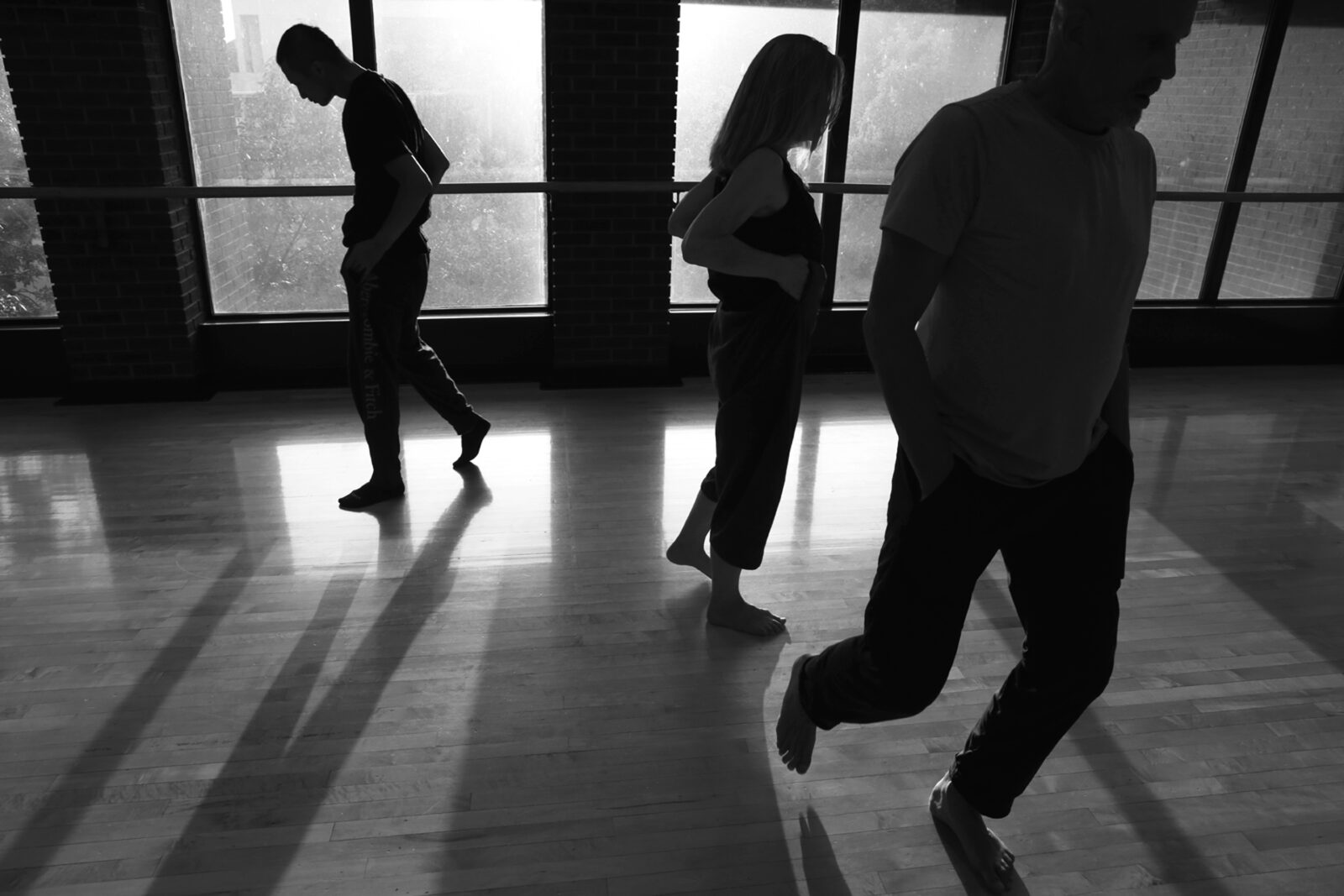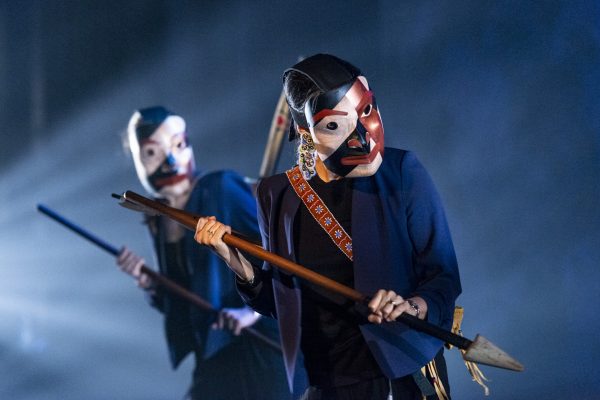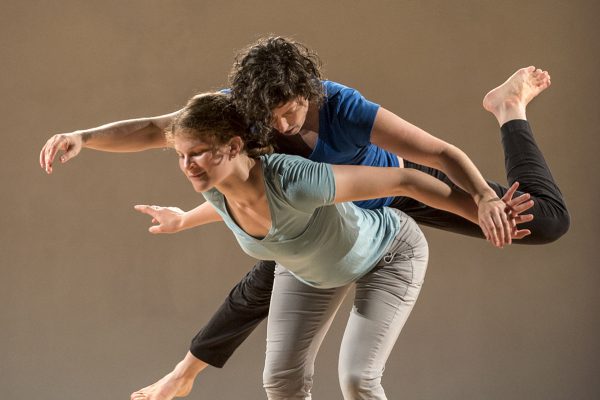Joshua Tree played on June 22 and 23 at the Triffo Theatre at MacEwan University in Edmonton, Alberta.
Joshua Tree is an engaging interdisciplinary project that brings dance, music, light and visual art together. The performers play with improvisation and it is immediately clear they are highly attuned to one another. The lighting design by Dorrie Deutschendorf is simple yet beautiful; it fills the space to allow all of the piece’s components to be equally appreciated.
At the top of the show, the house lights are on and the audience can see the doors leading backstage. The music console is located in the audience and the only object on stage is a microphone.
Composer Gary James Joynes walks into the audience from backstage and sits at the audio console, followed by Brian Webb, who walks, pauses, and counts in a sporadic and unpredictable order as he moves around the stage. He stops centre stage to perform a short movement solo with his arms extended outward like the branches of a strong tree, his torso circling the space above his firmly grounded feet. One at a time, the other performers join him: Edmonton’s own Piet Defraeye, Deepak Paramashavan and Lin Snelling move swiftly across the stage, playing with the shifting proximity between each other. Webb steps up to the microphone to talk as the others continue to walk and intermittently dance, both alone and with each other.
The aural stories shared by Webb and Defraeye are rather unsettling. They tell true stories of racism and unfair treatment of people in need on the streets of Edmonton. The stories are engaging and thought-provoking, told with honesty and empathy, however, the connection between these stories and the piece’s title is unclear.
Artistic director Webb’s preference for Erick Hawkins’ technique informs the ensemble’s movement choices in subtle yet noticeable ways as the performers exhibit both strength and effortlessness in their port de bras. Each performer brings their own distinct movement style to the piece; Snelling stands out with her signature mixture of release and sparky impulsiveness, however, similarly fluid hand gestures and pensive looks suggest that the dancers are emulating each other’s movement choices.
As legend has it, the Joshua tree acquired its name in the early 1950s by Mormon pioneers travelling westward through the California desert in search of a place to settle. At times the performers’ open sternum in high release with their arms reaching to the heavens are reminiscent of the tree’s spiritual symbolism.
Visual artist Brad Necyk’s projected images provide a connection between the title of the piece and its content with images of water and desert terrain; still, it is impossible to know exactly what the collaborators intend to portray without explicit program notes or an in-depth conversation with dramaturg Beth Graham. As the piece comes to a stunning conclusion, Lin Snelling lies alone, motionless under a video image of thin falling strands of light that look like sand. At this point, Deepak Paramashavan has left the stage to join Joynes in the front of the house where he sings and masterfully plays the Sarangi. This is a moment for the audience to listen without distraction to the collaboration between the musicians as lights slowly fade.
The Joshua tree is a variety of the Yucca, and has recently been permanently added to the endangered species list by California lawmakers after a long fight by conservationists. Perhaps this piece speaks to the notion that humanity and our ability to survive the climate crisis is at risk just as the Joshua Tree is. While at times confusing, Joshua Tree is both narrative and conceptual, abstract and representational, successfully blurring the boundaries between performance disciplines, while provoking feelings of empathy and concern for humanity and the environment.
Dance Media Group strengthens the dance sector through dialogue. Can you help us sustain national, accessible dance coverage? Your contribution supports writers, illustrators, photographers and dancers as they tell their own stories. Dance Media Group is a charitable non-profit organization publishing The Dance Current in print and online.

Tagged:





